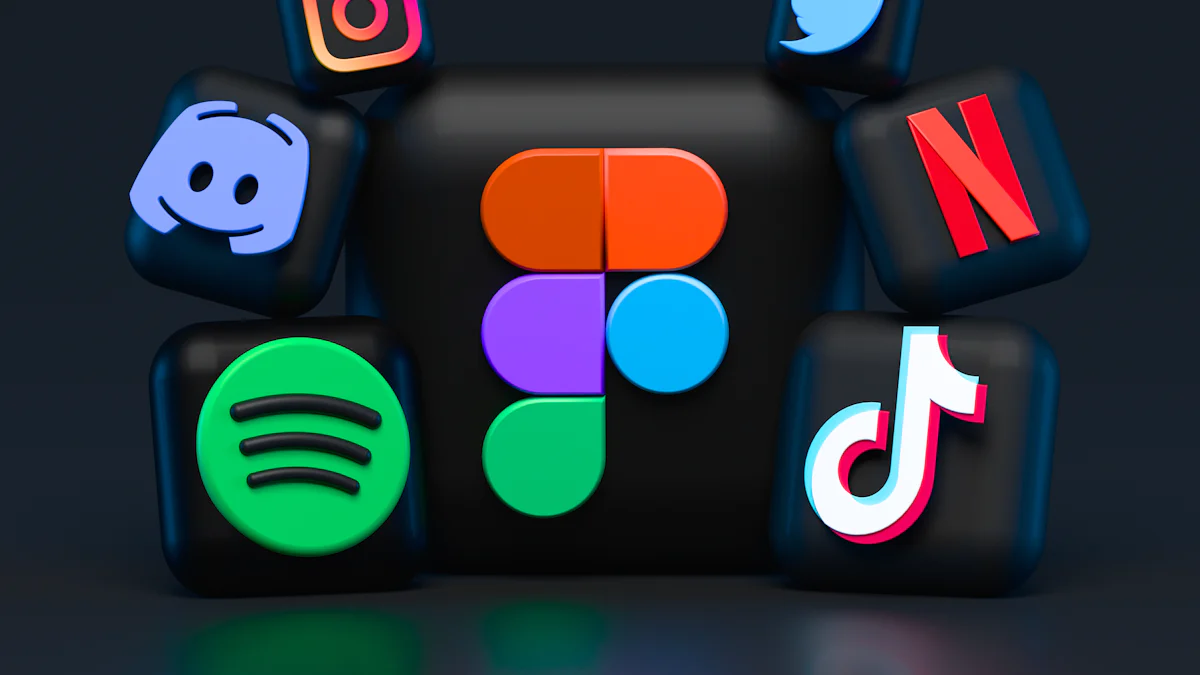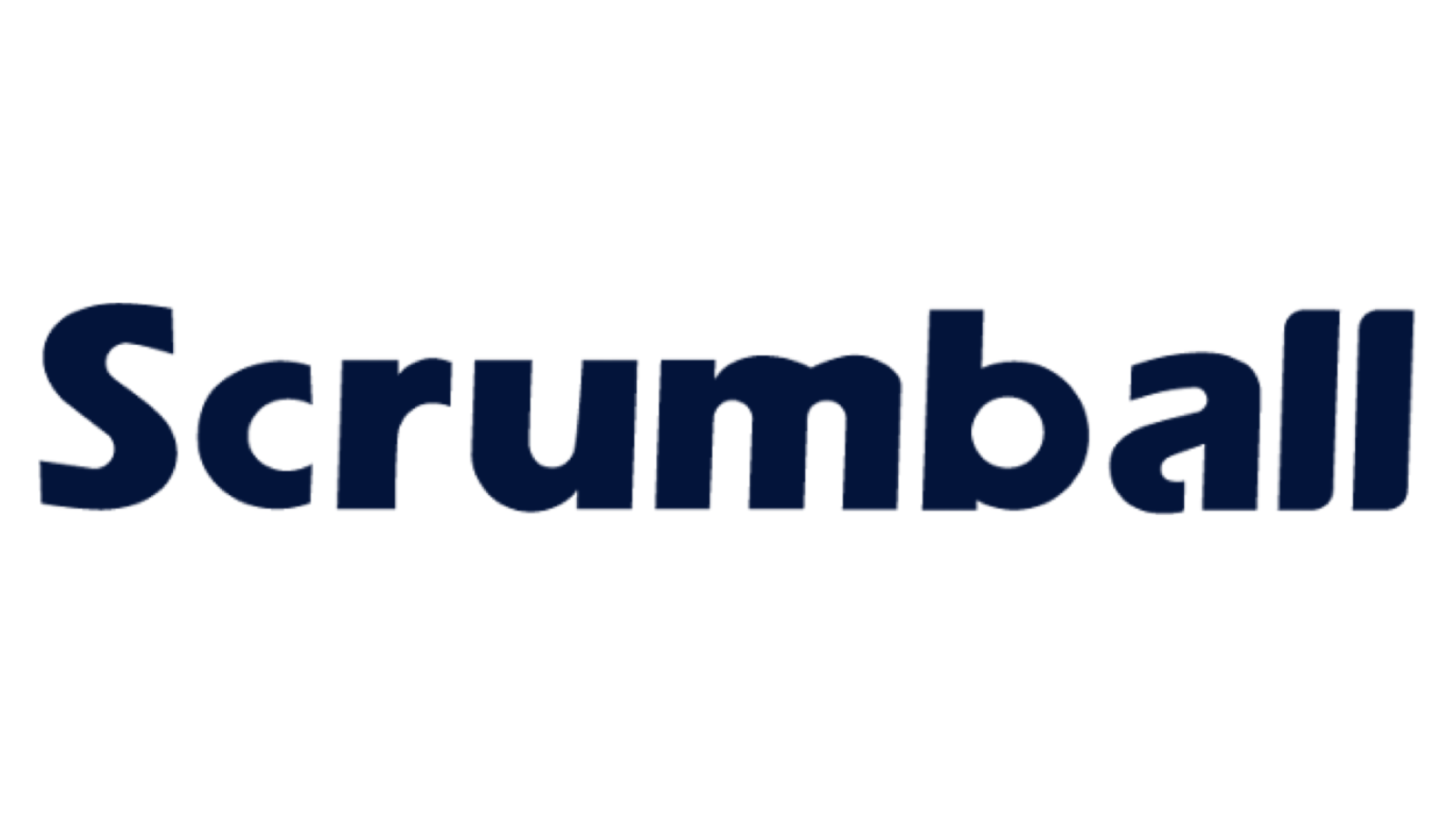Top Tips for Choosing the Best Influencer Marketing Platform

Finding the best influencer marketing platform can feel overwhelming, especially with so many options out there. Did you know that 80% of marketers now use influencer platforms, up from 69.7% in 2021? This growth shows how essential these tools have become. But challenges remain. Many brands struggle to identify genuine influencers, track campaign results, or adapt to changing social media algorithms. You need a platform that simplifies these tasks while aligning with your goals. The right choice can save you time, boost your ROI, and help you connect with your audience more effectively.
Define Your Brand's Needs
Before diving into influencer marketing, you need to understand your brand’s unique needs. This step ensures that your campaigns align with your goals and deliver meaningful results. Let’s break it down.
Identify Your Campaign Goals
What do you want to achieve with influencer marketing? Setting clear goals helps you measure success and stay focused. Here are some common objectives brands aim for:
- Boosting sales and conversions
- Enhancing customer engagement
- Building brand awareness
- Driving website traffic
- Generating user-generated content
For example, if your goal is to build brand awareness, you might prioritize influencers with a large following. On the other hand, if you want more user-generated content, you’ll look for creators who encourage audience participation. Knowing your goals will guide every decision, from choosing influencers to evaluating campaign performance.
Understand Your Target Audience
Who are you trying to reach? Defining your target audience is crucial for connecting with the right influencers. Start by exploring demographics like age, gender, and location. Then, dig deeper into psychographics—what are their interests, values, and behaviors?
Here’s how you can identify your audience effectively:
- Research demographics and psychographics.
- Use hashtag searches and competitive research to find relevant influencers.
- Align with influencers whose audience matches your target market.
- Leverage influencer discovery tools for precise searches.
When you understand your audience, you can choose influencers who resonate with them. This alignment increases the chances of your campaign’s success.
Determine Your Key Performance Indicators (KPIs)
How will you measure success? KPIs help you track progress and evaluate the impact of your campaigns. Here’s a quick look at some commonly used KPIs:
| KPI | Description |
|-------------------------|-------------------------------------------------------------------------------------------------------|
| Reach and Impressions | Metrics that indicate how many people have seen the content, essential for measuring visibility. |
| Earned Media Value | Assigns a monetary value to the organic reach gained through influencer campaigns. |
| Engagement | Measures interactions (likes, comments, shares) that indicate audience interest and involvement. |
| Conversions | Tracks the number of sales or actions taken as a direct result of the influencer campaign. |
| Brand Sentiment | Assesses public perception and feelings towards the brand before and after the campaign. |
Choose KPIs that align with your goals. For instance, if you’re focused on conversions, track sales or sign-ups. If visibility is your priority, monitor reach and impressions. These metrics will help you refine your strategy and maximize the value of the best influencer marketing platform you choose.
Key Features of the Best Influencer Marketing Platform

When choosing the best influencer marketing platform, you need to focus on features that simplify your workflow and maximize your campaign’s impact. Let’s explore the key tools and capabilities that make a platform stand out.
Influencer Discovery Tools
Finding the right influencers can feel like searching for a needle in a haystack. That’s where influencer discovery tools come in. These tools help you narrow down your search by providing access to valuable audience demographics like age, gender, and location. You can also check the quality of an influencer’s audience to ensure they’re genuine and engaged.
Many platforms let you view detailed metrics, such as follower count and engagement rates, so you can make informed decisions. Some even streamline the process by offering advanced search filters to find influencers who align with your brand. This saves you time and ensures your campaigns connect with the right audience.
Campaign Management Capabilities
Managing influencer campaigns involves juggling multiple tasks. The best platforms offer tools to automate and organize these processes. For example, you can schedule posts, track deadlines, and approve content all in one place. Some platforms even use AI to optimize content and provide data-driven insights.
Collaboration tools are another game-changer. They make it easy for your team to communicate with influencers and stakeholders, keeping everyone on the same page. These features not only save time but also reduce errors, ensuring your campaigns run smoothly.
Analytics and Reporting Features
Data is the backbone of any successful marketing strategy. Strong analytics and reporting tools help you track performance and measure ROI. With these features, you can monitor metrics like reach, engagement, and conversions in real time.
Some platforms also offer customizable reports, so you can focus on the data that matters most to your goals. These insights help you refine your strategy and prove the value of your campaigns. In today’s data-driven world, having access to advanced analytics is essential for staying ahead.
Integration with Other Marketing Tools
When you’re running a marketing campaign, juggling multiple tools can feel overwhelming. That’s why choosing a platform that integrates seamlessly with your existing marketing stack is a game-changer. It saves you time and ensures all your tools work together like a well-oiled machine.
Here’s why integration matters. Imagine you’re using an email marketing tool, a CRM, and a social media scheduler. If your influencer marketing platform connects with these tools, you can streamline your workflow. For example, you could automatically sync influencer data with your CRM or schedule campaign posts directly from the platform. This eliminates manual tasks and reduces the risk of errors.
Look for platforms that offer integrations with popular tools like Google Analytics, HubSpot, or Mailchimp. These connections allow you to track performance across channels and get a complete view of your campaign’s impact. Some platforms even integrate with e-commerce tools, making it easier to track sales and conversions from influencer campaigns.
Pro Tip: Check if the platform supports API access. This feature lets you create custom integrations tailored to your specific needs.
Another benefit of integration is better data management. When your tools communicate, you can centralize your data and make more informed decisions. For instance, combining influencer metrics with website analytics can help you understand how campaigns drive traffic and sales.
The best influencer marketing platform doesn’t just stand alone. It becomes a part of your entire marketing ecosystem, helping you achieve your goals more efficiently.
Budget and Pricing Considerations
Choosing the right influencer marketing platform isn’t just about features—it’s also about finding one that fits your budget. Let’s explore how to evaluate pricing models, assess ROI, and take advantage of free trials or flexible plans.
Evaluate Pricing Models
Influencer marketing platforms offer various pricing models, and understanding them can help you make the best choice for your brand. Here are some common options:
- Flat-Rate Pricing: You pay a fixed amount for services, making it easy to budget.
- Cost-per-Click (CPC): You pay based on the number of clicks your campaign generates.
- Cost-per-Mile (CPM): You’re charged for every 1,000 impressions, ideal for boosting visibility.
- Affiliate Marketing: Influencers earn a commission for sales driven by their content.
- Freebies/Gifts: Instead of cash, influencers receive products or experiences.
Here’s a quick comparison of other pricing models:
| Pricing Model | Description |
|-----------------------------|------------------------------------------------------------------------------------------------------|
| Pay-Per-Post | Simple but risky; no guarantee of engagement or quality. |
| SaaS Subscription | Monthly fee for platform access; influencers are paid separately. |
| Cost-Per-Engagement | Focuses on social interactions but may not reflect direct traffic or sales. |
Understanding these options helps you pick a model that aligns with your goals and resources.
Assess the Return on Investment (ROI)
ROI isn’t just about sales. Influencer marketing impacts the entire customer journey, from awareness to retention. To assess ROI effectively, consider these factors:
- Measure engagement and conversions to see how campaigns perform.
- Identify influencers who align with your audience and goals.
- Balance brand-building efforts with performance-driven campaigns.
Did you know 80% of consumers prefer brands that collaborate with influencers beyond just sponsored posts? This shows how influencers can nurture long-term loyalty, not just drive immediate sales. A platform that tracks these metrics will help you maximize your investment.
Look for Free Trials or Flexible Plans
Many platforms offer free trials or flexible pricing to help you get started. For example:
| Platform | Free Trial/Plan | Flexible Plans Description |
|------------|------------------|-----------------------------------------------------------------------------|
| Social Cat | Yes | Affordable plans for small businesses with limited budgets. |
| Heepsy | Yes | Tiered pricing plans based on needs, allowing for scaling. |
| Upfluence | Yes | Free plan with basic features and customizable pricing options. |
Free trials let you test features before committing, while flexible plans ensure you only pay for what you need. These options make it easier to find the best influencer marketing platform for your budget.
Pro Tip: Start with a free trial to explore the platform’s capabilities. This way, you can see if it meets your needs without any upfront cost.
User Experience and Support
Ease of Use and Interface Design
When you’re using an influencer marketing platform, ease of use can make or break your experience. A user-friendly interface saves you time and reduces frustration. Look for platforms with intuitive navigation, clean layouts, and clear prompts. These features simplify tasks like planning campaigns, finding influencers, and analyzing results.
For example, a well-designed platform lets you quickly search for influencers who match your brand’s needs. It also makes campaign management straightforward by keeping all tools in one place. This efficiency helps you stay focused on your goals instead of getting bogged down by complicated processes.
Tip: Test the platform’s interface during a free trial. If it feels clunky or confusing, it might not be the right fit for you.
Availability of Customer Support
Even the best platforms can have hiccups. That’s why responsive customer support is essential. Whether you’re troubleshooting an issue or learning how to use a feature, good support ensures you get the help you need.
Most platforms offer multiple support options, like live chat, email, or phone assistance. Some even provide detailed guides or tutorials to help you navigate the software. This kind of support can be a lifesaver, especially when you’re running a time-sensitive campaign.
Pro Tip: Check reviews to see how other users rate the platform’s customer service. Quick and helpful responses are a sign of a reliable platform.
Platform Reliability and Performance
Reliability is key when choosing the best influencer marketing platform. You don’t want a system that crashes during a campaign or delivers inaccurate data. Look for platforms with strong performance metrics, like high availability and low failure rates.
Metrics like Mean Time Between Failures (MTBF) and Mean Time to Repair (MTTR) can give you an idea of how dependable a platform is. Platforms with fewer customer-reported defects are also more trustworthy.
A reliable platform ensures your campaigns run smoothly, helping you focus on achieving your goals without unnecessary interruptions.
Research and Compare the Best Influencer Marketing Platforms

Read Reviews and Testimonials
Before committing to a platform, take time to read reviews and testimonials. These can give you a clear picture of the platform’s strengths and weaknesses. Look for feedback on features, usability, and customer support. Online reviews from trusted sources or marketing forums are a great starting point.
You can also connect with brands that already use the platform. Ask them about their experiences. Did the platform meet their expectations? Were there any hidden challenges? Joining online communities or groups of marketers can also help you gather honest opinions.
Tip: Pay attention to case studies. They often highlight how brands achieved success using the platform, giving you insights into its potential.
Request Demos or Free Trials
Demos and free trials are your best friends when evaluating platforms. They let you explore features and see if the platform aligns with your needs. During a demo, you can ask questions and get a hands-on feel for the interface. Free trials, on the other hand, allow you to test the platform in real-world scenarios.
Here’s why this step is so important:
- You’ll see if the platform’s tools match your campaign goals.
- You can assess how easy it is to use.
- You’ll build trust in the platform by interacting with its team.
For example, some platforms let you run sample campaigns during the trial. This helps you evaluate engagement metrics and overall performance. Don’t skip this step—it’s a low-risk way to ensure you’re making the right choice.
Compare Platforms Based on Your Needs
Once you’ve gathered reviews and tried demos, it’s time to compare platforms. Start by listing your priorities. Do you need advanced analytics? Seamless integration with your existing tools? Or maybe you’re focused on finding authentic influencers?
Here’s a checklist to guide your comparison:
- Does the platform make it easy to discover relevant influencers?
- Can you manage campaigns from one dashboard?
- Is communication with influencers simple and efficient?
- Does it offer a secure payment system?
- Are the analytics comprehensive enough for tracking performance?
Also, consider your budget. Some platforms use subscription models, while others charge per influencer or feature. Make sure you understand the pricing structure and any hidden costs.
Authenticity is key. Platforms with a diverse range of influencers help you connect with genuine creators who resonate with your audience.
By following these steps, you’ll find the best influencer marketing platform that aligns with your goals and delivers value.
Choosing the best influencer marketing platform can transform your campaigns. It helps you discover authentic influencers, streamline workflows, and track performance with ease. Platforms like Cirqle show how data-driven tools can enhance your strategy. Successful campaigns, like Dunkin’s partnership with Charli D’Amelio or Penguin Teen’s #BookTok initiative, prove the impact of aligning the right platform with your goals. Take time to research, test, and compare options. A thoughtful choice ensures your campaigns connect with your audience and deliver measurable results. Ready to elevate your influencer marketing game? Start exploring today!
FAQ
What is an influencer marketing platform?
An influencer marketing platform is a tool that helps you find, manage, and track influencers for your campaigns. It simplifies tasks like discovering influencers, managing collaborations, and analyzing campaign performance. These platforms save time and improve your marketing results.
How do I know if a platform is right for my brand?
Start by identifying your goals and budget. Then, test the platform using free trials or demos. Look for features that align with your needs, like influencer discovery tools, analytics, and integrations. Reviews and testimonials can also help you decide.
Are influencer marketing platforms expensive?
Not always! Many platforms offer flexible pricing plans, including free trials or pay-as-you-go options. Costs depend on features and scale. Small businesses can start with affordable plans, while larger brands might invest in advanced tools for better results.
Can I use an influencer marketing platform for small campaigns?
Absolutely! These platforms work for campaigns of all sizes. They help you find niche influencers, manage collaborations, and track results, even for small-scale efforts. Many platforms cater to small businesses with budget-friendly options.
What metrics should I track on these platforms?
Focus on metrics that match your goals. For example:
- Engagement: Likes, comments, and shares.
- Reach: How many people saw the content.
- Conversions: Sales or sign-ups.
- Brand Sentiment: Audience perception of your brand.
Tip: Use the platform’s analytics tools to monitor these metrics in real time.
See Also
Comprehensive Tips for Choosing Your Brand's Influencer Platform
Finding the Top TikTok Influencer Marketing Agency for You
Seven Essential Steps for Crafting Your Influencer Strategy
